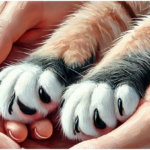When it comes to cat grooming, many cat owners assume their feline friends are completely self-sufficient. After all, cats spend a significant portion of their day grooming themselves! While it’s true that most cats do a great job keeping clean on their own, there are still instances where professional grooming can be beneficial. Whether it’s dealing with matted fur, nail trimming, or a much-needed bath, finding the right groomer is essential. In this post, we’ll cover everything you need to know about selecting a cat groomer and what you can expect during the grooming process.
Why Consider Professional Grooming?
Cats are natural groomers, but some situations call for extra help:
- Long-haired breeds: Cats like Maine Coons, Persians, and Ragdolls have thick, luscious coats that can become matted without regular grooming. Even with frequent brushing at home, these cats may need professional care to keep their coats healthy.
- Health issues: Senior cats or those with arthritis might find it challenging to keep up with grooming, and they can benefit from a little assistance.
- Skin conditions or allergies: Cats with allergies or skin conditions might require specialized shampoos or treatments, which a professional groomer can administer safely.
- Shedding: If your cat sheds excessively, a groomer can help with deshedding treatments that reduce the amount of fur your cat leaves behind.
Selecting the Right Groomer
Finding a groomer who understands feline behavior and has experience with cats is crucial for a stress-free experience. Here’s how to choose the right one:
1. Cat-Specific Experience
Not all groomers are experienced with cats. While many groomers specialize in dogs, cats can be more sensitive and difficult to handle. Always ask if the groomer has specific experience grooming cats. Ideally, look for someone certified by a reputable organization, such as the National Cat Groomers Institute (NCGI).
2. Handling and Restraint Techniques
Cats don’t typically enjoy being restrained, so it’s essential that the groomer uses gentle techniques. Ask about their approach to keeping cats calm during grooming. Do they use sedation or tranquilizers? This is not recommended unless prescribed by a vet. A good groomer will have techniques to keep your cat calm without resorting to medication.
3. Sanitary and Safe Environment
Visit the grooming salon before booking an appointment. The salon should be clean, quiet, and free from overwhelming smells. Cats are sensitive to loud noises, so it’s ideal if the grooming area is separate from dogs or any loud distractions.
4. Reviews and Recommendations
Check online reviews or ask for recommendations from fellow cat owners or your veterinarian. Personal experiences from others are invaluable in finding a reliable and compassionate groomer.
5. Mobile Grooming
If your cat gets stressed traveling, consider mobile grooming. Many groomers offer services where they come to your home and groom your cat in a specially equipped van. This can reduce your cat’s anxiety and make the grooming experience much more comfortable.
What to Expect During a Grooming Session
A typical cat grooming session involves several steps designed to keep your cat looking and feeling their best.
1. Nail Trimming
One of the most common reasons to visit a groomer is for a nail trim. Overgrown nails can cause discomfort and even lead to injury, as they may get stuck in carpet or furniture. Groomers use specialized clippers to trim the nails quickly and painlessly.
2. Brushing and Deshedding
Even short-haired cats benefit from a thorough brushing. Groomers use tools like de-shedding combs to remove loose fur, which reduces shedding and prevents hairballs. Long-haired cats might require more intensive brushing to prevent mats.
3. Mat Removal
Mats are clumps of tangled fur that can cause discomfort and even skin infections. If your cat has mats, the groomer will gently cut or shave them out. Never attempt to cut out mats yourself, as you could accidentally hurt your cat’s skin.
4. Bathing
Though most cats don’t need frequent baths, there are times when a good scrub is necessary—especially for older or less mobile cats who have trouble grooming themselves. Groomers use cat-specific shampoos that are gentle on the skin and won’t strip the fur of essential oils.
Some cats dislike water, so expect the groomer to take a calm and patient approach. Depending on your cat’s temperament, they may need a dry shampoo or waterless bath.
5. Ear Cleaning
Ear cleaning is an important part of grooming, especially for cats prone to wax buildup or ear mites. Groomers will gently clean your cat’s ears with a solution designed for sensitive feline skin.
6. Anal Gland Expression
This step isn’t common for all cats but may be necessary for some. Groomers can express the anal glands to prevent blockage or infection, a task that is usually performed only when needed.
7. Final Trim or Shave
Some cats, particularly long-haired breeds, might benefit from a trim or even a shave to help manage their coat. Popular cuts like the “lion cut,” where the body is shaved but the head, legs, and tail are left fluffy, can help keep your cat cool and prevent mats. However, always discuss with your groomer whether a trim is appropriate for your cat, as shaving can affect the natural protection of their coat.
How to Prepare Your Cat for Grooming
It’s important to help your cat feel as comfortable as possible before a grooming session. Here are a few tips to prepare:
- Acclimatize Your Cat: If your cat isn’t used to being handled, try getting them comfortable with touch by gently brushing them at home or massaging their paws. This will make the grooming process less shocking.
- Crate Training: If you’re taking your cat to a groomer, make sure they’re comfortable in their crate or carrier. Leave the crate out for a few days before the appointment to let your cat get used to it.
- Stay Calm: Cats pick up on their owner’s energy. If you’re anxious, your cat may become anxious too. Approach the grooming appointment calmly and confidently.
- Consult with Your Vet: If your cat has any medical conditions, consult with your vet before a grooming session. They may recommend certain products or techniques to ensure your cat’s comfort and safety.
Conclusion: A Groomed Cat Is a Happy Cat!
While many cats do an excellent job of keeping themselves clean, professional grooming can be a valuable addition to your cat’s care routine. From nail trims to mat removal, regular grooming sessions can help keep your cat comfortable, healthy, and happy.
When selecting a groomer, look for someone who is experienced with cats, uses gentle handling techniques, and creates a calm environment. With the right groomer, your feline friend will be in good hands—and you’ll have a fresh, clean cat to cuddle with at the end of the day!
By following these tips, you can find the best groomer for your cat and know exactly what to expect during the grooming process. Regular professional grooming can complement your at-home routine and ensure your cat stays healthy and well-maintained.







Thank you for writing this post!
Thank you for taking the time to comment! Feedback is much appreciated.
Thanks for posting. I really enjoyed reading it, especially because it addressed my problem. It helped me a lot and I hope it will help others too.
Impressed with your web site. I had no trouble navigating truly simple to access. Excellent information!
The article helped me a lot and I like the topic